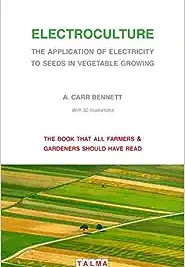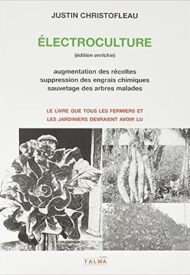We explore the electrifying world of sustainable agriculture and horticulture in this issue of ElectroCulture Magazine. In this fascinating article entitled “Electroculture” by Justin Christofleau, we investigate the transformative power of electricity in agriculture.
Justin’s knowledge and enthusiasm for electroculture will enlighten you on the cutting-edge techniques, innovative technologies, and environmentally responsible practices that harness electrical energy to optimize plant growth and increase yields. Join us as we reveal the electrifying secrets behind this revolutionary approach, empowering you to create a greener, more efficient, and sustainable future for yourself.
Who is Justin Christofleau?
Early in the 20th century, Justin Christofleau, a French farmer and inventor, created a system of agriculture known as electroculture. Electroculture is a technique of plant cultivation in which electrical currents are used to stimulate plant growth. Christofleau asserted that his system could boost crop yields by up to 200 percent without using chemical fertilizers.
Christofleau was born in 1868 in the French community of Saint-Aignan-sur-Cher. In the early 1900s, he began experimenting with electrical currents as a farmer. By applying electrical currents to the soil, he believed plants could be stimulated to grow more quickly and produce more fruit.
Christofleau’s experiments were fruitful, and he began promoting his electroculture system. In 1922, he published a book on the subject and lectured and demonstrated throughout France. Christofleau’s system was met with some skepticism, but it attracted a sizeable number of adherents.
Christofleau passed away in 1948, but his contributions to electroculture are still studied and debated. Some scientists believe that his claims have some validity, while others believe that his results were caused by other variables, such as the use of chemical fertilizers.

Electroculture By Justin Christofleau-A Textbook
Electroculture Textbook by Justin Christofleau is a comprehensive guide to the practice of electroculture, the technique of cultivating plants using electrical currents to stimulate growth. This book discusses the history of electroculture, the science behind it, and the implementation of electroculture techniques in practice.
Christofleau begins by tracing the evolution of electroculture from the early experiments of Luigi Galvani in the 18th century to the present day. The author then discusses the physics behind electroculture and explains how electrical currents can affect plant growth.
Buy Our Handcrafted Electroculture eBook Now…
The majority of the book is devoted to the implementation of electroculture techniques in practice. Christofleau explains in detail how to set up an electroculture system, how to apply electrical currents to the soil, and how to monitor the results of electroculture treatments. The book also contains several case studies that document the successful application of electroculture in a variety of agricultural contexts.
Get The Latest Copy of Textbook for Electroculture By Justin Christofleau
Anyone interested in learning more about this promising new agricultural technology will find the Electroculture Textbook to be an invaluable resource. The book is well-written and straightforward, and it provides a comprehensive overview of electroculture’s science and practice.
Outline of Electroculture Textbook
Here is an outline of Electroculture Textbook by Justin Christofleau, published in 1922:
- Introduction
- History of electroculture
- Principles of electroculture
- Methods of Electroculture
- Soil electrification
- Plant electrification
- Electroculture apparatus
- Results of Electroculture
- Increased crop yields
- Improved plant quality
- Increased resistance to pests and diseases
- Conclusion
- The benefits of electroculture
- The future of electroculture
The book is divided into four main parts: Introduction, Methods of Electroculture, Results of Electroculture, and Conclusion. The Introduction provides a brief history of electroculture and discusses the principles behind it. The Methods of Electroculture section describes the different ways to electrify soil and plants, and the types of apparatus that can be used. The Results of Electroculture section presents the results of various experiments that have been conducted to test the effectiveness of electroculture. The Conclusion summarizes the benefits of electroculture and discusses its future potential.
Get more accurate guidance from ELECTROCTURE TEXTBOOKS, choose your book by clicking below...
major concepts delivered Justin Christofleau
Justin Christofleau’s Electroculture Textbook delivers a number of major concepts and principles, including:
- The importance of electrical currents in plant growth.
- The different ways that electrical currents can be applied to soil to stimulate plant growth.
- The benefits of electroculture, including increased crop yields, improved plant health, and reduced environmental impact.
- The challenges of electroculture, such as the cost of equipment and training.
The book also provides detailed instructions on how to set up an electroculture system, how to apply electrical currents to the soil, and how to monitor the results of electroculture treatments.
Here are some of the key concepts and principles of electroculture:
- Electrical currents can stimulate plant growth. Electrical currents can increase the rate of photosynthesis, the process by which plants convert sunlight into food. This can lead to increased crop yields, improved plant health, and reduced environmental impact.
- Different electrical currents can have different effects on plant growth. The type of electrical current, the strength of the current, and the duration of the current can all affect how plants respond.
- Electroculture can be used to improve the growth of a wide variety of plants. Electroculture has been shown to be effective in improving the growth of fruits, vegetables, flowers, and trees.
- Electroculture can be used to improve the health of plants. Electroculture can help plants resist pests and diseases, and it can also help plants recover from stress.
- Electroculture can be used to reduce the environmental impact of agriculture. Electroculture can reduce the need for chemical fertilizers, which can pollute the environment.
Overall, electroculture is a promising new agricultural technology that has the potential to increase crop yields, improve plant health, and reduce environmental impact. However, it is still a relatively new technology, and there is more research that needs to be done to fully understand its potential.
Get The Latest Copy of Textbook for Electroculture By Justin Christofleau
key takeaways
Here are some of the key takeaways from the book:
- Electrical currents can stimulate plant growth by increasing the rate of photosynthesis, the process by which plants convert sunlight into food.
- Electroculture can increase crop yields by up to 200% without the use of chemical fertilizers.
- Electroculture can improve plant health by making them more resistant to pests and diseases.
- Electroculture can reduce the environmental impact of agriculture by reducing the need for chemical fertilizers.
If you are interested in learning more about electroculture, I encourage you to read Justin Christofleau’s Electroculture Textbook. It is a valuable resource that can help you learn more about this promising new agricultural technology.
MR. J. CHRISTOFLEAU’S APPEAL TO AGRICULTURISTS, VITICULTURISTS AND HORTICULTURISTS OP THE WORLD.
Laborious phalanx, to whom I have the honour to belong by my birth, I come now towards you to raise my voice in favour of a great invention which will be, if you understand me, one of the zreat factors of the resurrection and prosperity of the whole world, as it means the intensifying of the production of the earth, the increasing of crops in considerable proportions, and minimizing as much as possible the manual labour appertaining to culture and the economizing of the immense sums of money which are being spent annually for fertilizers and replacing them by this new apparatus wherein are condensed all the forces of nature.
That is to say: The land magnetism, tellTiric currents, the electricity of the floating air and that carried by the clouds, the sun, the wind, the rain, and even by the frost, forces which are captured and transformed into energetic electricity by this apparatus which carries them to the soil in a FEEBLE AND CONTINUOUS MANNER, and which renders it free from the microbes which attack the Seeds and Plants.
(Signed) J. CHRISTOFLEAU.


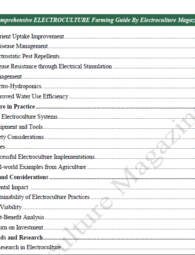

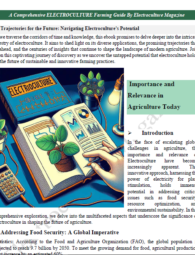
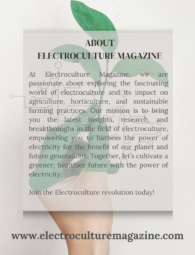

![Electroculture Bible: [7 IN 1] by Rick Croppield Electroculture Bible: [7 IN 1] by Rick Croppield](https://electroculturemagazine.com/wp-content/uploads/2023/08/B0C47Q56RC.01._SCLZZZZZZZ_SX500_-200x290.jpg)

![Electroculture Bible: [5 IN 1]: by Benjamin Foster Electroculture Bible: [5 IN 1]: by Benjamin Foster](https://electroculturemagazine.com/wp-content/uploads/2023/08/51XVYHHWHfL._SX384_BO1204203200_-200x290.jpg)



